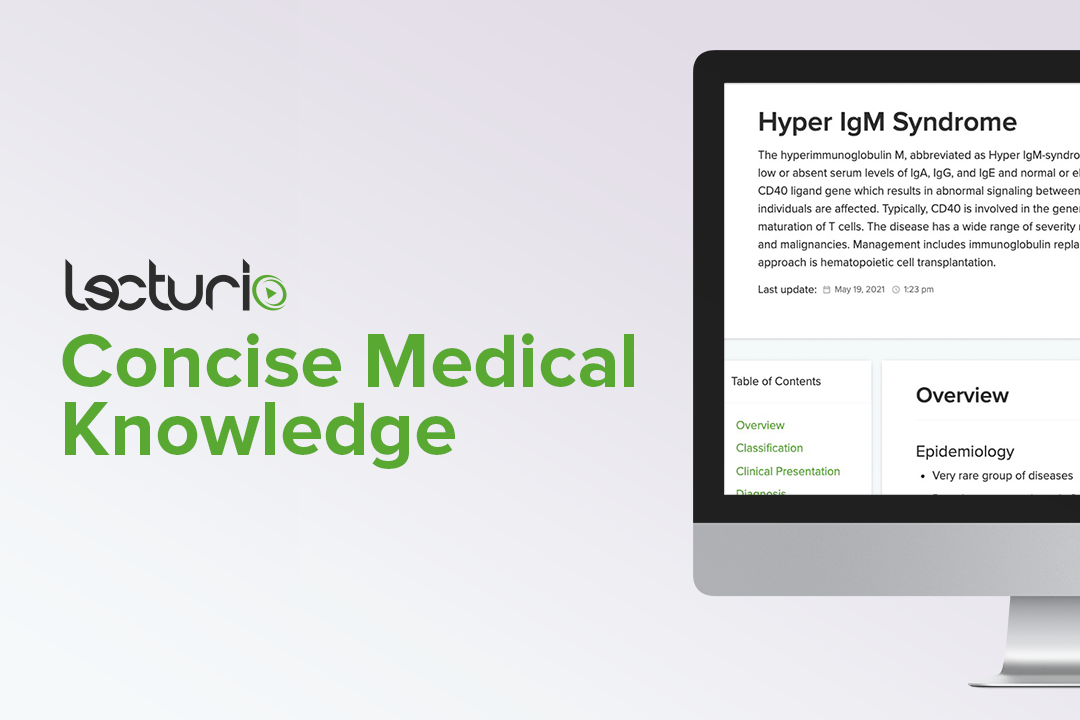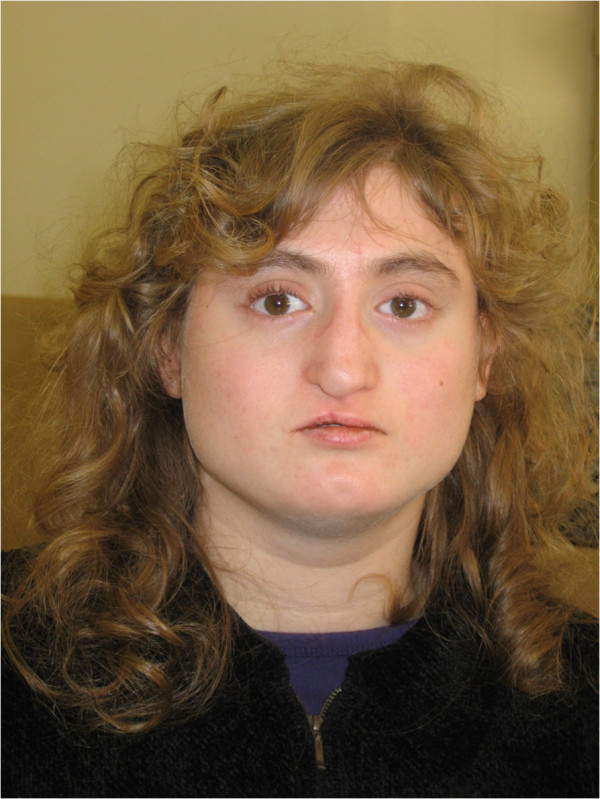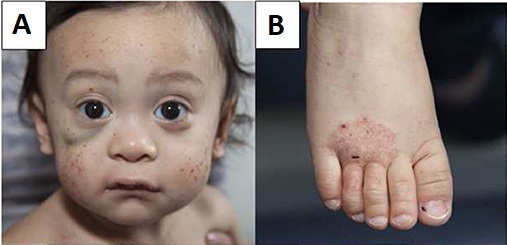Playlist
Show Playlist
Hide Playlist
T-Cell Immunodeficiencies: Hyper IgM Syndrome, Wiskott-Aldrich Syndrome and MHC Class II Deficiency – Primary Immunodeficiency
-
Slides Immunodeficiency.pdf
-
Reference List Immune System.pdf
-
Download Lecture Overview
00:01 Examples of immunodeficiencies affecting T-cells are listed here. 00:06 So for example, a defective gene for the CD40 ligand, or for CD40 itself, or for AID or for NEMO or for UNG, result in a condition called hyper-IgM syndrome. 00:20 And you can read through this list for yourself. 00:23 You can see a number of different gene defects causing a number of different consequences. 00:32 In hyper-IgM syndrome, there is raised serum IgM and IgD. 00:38 You’re probably thinking, hang on a minute, I thought we were talking about immunodeficiency? And yet you’re telling me that there is raised serum IgM and IgD, that there’s more. 00:51 Hyper-IgM it sounds good doesn’t it? You got more IgM than other people. 00:55 But the problem is, that there is very low or absent IgG, IgA and IgE. 01:04 Most patients have an X-linked form of the hyper-IgM syndrome, in which there is a defect in the gene encoding CD40 ligand. 01:16 Less commonly, there is a defect in the gene encoding a molecule called NEMO, which is the NF𝜅B essential modifier, sometimes known as IKKγ. 01:30 And in some patients there is a defect in the gene encoding CD40, which is an autosomal gene or in the gene encoding the activation-induced cytidine deaminase (AID) or in the gene encoding uracil-DNA glycosylase (UNG). 01:51 The result is recurrent bacterial infections. 01:55 There is also a condition called Hyper-lgE Syndrome and in this condition there is immune dysregulation with an increase in the level of lgE antibody as the name suggests Hyper-lgE Syndrome. 02:13 An increase in the number of eosinophils, B-cells and natural killer cells but a decrease in CD8+ T-cell proliferation and activation. 02:25 There are autosomal dominant mutations in STAT3 or autosomal recessive mutations in TYK2 or DOCK8. 02:36 STAT3 and TYK2 are involved in signaling through several different cytokine receptors. 02:44 DOCK8 deficiency results in an effect on the actin cytoskeleton. 02:52 As we can see here, from signaling through a pattern recognition receptor, being delivered through MyD88, DOCK8 is involved in actin cytoskeleton rearrangement. 03:09 DiGeorge Syndrome results from mutations in the TBX1 transcription factor which is involved in embryonic development. There is a failure of the thymus to develop and of course the thymus is where T-cells develop and you need a thymus in order for T-cells to develop. So there's a defect in helper T-cells, in regulatory T-cells and in cytotoxic T-cells. And cell-mediated immune responses are undetectable. Antibody responses are also poor due to a lack of T-cell help for antibody production from B-cells. 03:49 However, actually a complete absence of the thymus is relatively rare. 03:53 And more commonly the situation is a partial DiGeorge syndrome where there are still some T-cells, so the thymus doesn’t fully develop but it develops enough to produce some T-cells or be it at a reduced level. 04:09 Treatment can be by grafting neonatal thymus. 04:19 In Wiskott-Aldrich syndrome, there is a defective Wiskott-Aldrich syndrome protein (WASp) due to a defect in the gene that encodes that protein. 04:29 There is compromised T-cell motility, phagocyte chemotaxis, dendritic ccell trafficking and the polarization of the T-cell cytoskeleton towards B-cells during T-cell-B-cell collaboration. 04:46 In the early phases of T-cell activation, the adhesion molecules are scattered randomly across the surface. 04:55 However with activation of WASP by ZAP-70 there is induction of the actin cytoskeleton to form what is called an immunological synapse. 05:07 This is essentially the T-cell receptor interacting with peptide MHC plus the CD4 or CD8 molecule and all the other associated adhesion molecules that are required for optimal stimulation. 05:22 They all group together in the same area on the surface of the T-cell producing this so called immunological synapse. In MHC Class I deficiency you will not be surprised to hear there is a deficiency of MHC Class I. In order for MHC Class I to get to the surface of a cell it has to have a peptide sitting in its peptide binding groove. 05:46 Without a peptide, there is no transport of MHC Class I to the cell surface. 05:52 And MHC Class I deficiency can be caused by mutations in the genes for TAP1, or TAP2 or Tapasin. 06:01 And each of these three molecules is required for peptide loading into the MHC Class I groove. 06:11 So there will be no transport out of the endoplasmic reticulum and no MHC Class I on the cell surface so there will be nothing for cytotoxic T-cells to see. 06:22 In MHC Class II deficiency, there are mutations affecting the Class II transactivator (CIITA) and this affects transcription factors controlling class II gene expression. 06:37 Low expression of MHC Class II molecules on thymic epithelium impairs the positive selection of CD4+ T-cells. 06:47 You'll recall that within the thymus there are these thymic education events that initially have positive selection followed by negative selection. 06:59 And in the positive selection step, T-cells that are developing within the thymus initially, the double negative T-cells the lack of expression of CD4 and CD8 they switch on expression of these two genes to become double positive, CD4+, CD8+ T-cells. 07:17 And then there needs to be positive selection of CD4+ T-cells to make sure that their T-cell receptor is able to recognize peptides presented by your own versions of MHC Class II, in other words self MHC. 07:31 And if that recognition doesn’t take place, then apoptosis, programmed cell death occurs in the developing T-cells. 07:42 So they need to be rescued from apoptosis. 07:44 And interaction with MHC Class II on the thymic epithelial cells is what rescues them. 07:50 And of course if there’s no MHC Class II there due to a deficiency of MHC Class II, this rescue cannot take place and therefore the CD4+ T-cells will not develop. 08:02 Recurrent bronchopulmonary infections and chronic diarrhea occur within the first year of life in individuals with MHC Class II deficiency. 08:14 And death from overwhelming viral infections at around about four years of age will happen unless the patients are given appropriate treatment, for example with a hematopoietic stem cell transplant.
About the Lecture
The lecture T-Cell Immunodeficiencies: Hyper IgM Syndrome, Wiskott-Aldrich Syndrome and MHC Class II Deficiency – Primary Immunodeficiency by Peter Delves, PhD is from the course Immunodeficiency and Immune Deficiency Diseases. It contains the following chapters:
- Examples of Immunodeficiencies Affecting T-Cells
- Hyper-IgM Syndrome
- Hyper-IgE Syndrome
- DiGeorge Syndrome
- Wiskott-Aldrich Syndrome
- MHC Class I Deficiency
- MHC Class II Deficiency
Included Quiz Questions
Hyper-IgM syndrome is associated with mutations in genes for all EXCEPT which of the following?
- T-box transcription factor 1 (TBX1)
- Cluster of differentiation 40 ligand
- NF-kappa-B essential modulator (NEMO)
- Uracil N glycosylase (UNG)
- Activation-induced cytidine deaminase (AID)
Which of the following conditions is NOT a primary immunodeficiency?
- Myasthenia gravis
- Autoimmune polyendocrine syndrome -1
- Chronic granulomatous disease
- Wiskott-Aldrich syndrome
- DiGeorge syndrome
MHC Class II deficiency leads to death from viral infection at what age?
- 4 years
- 40 years
- 10 years
- 1 year
- 1 month
Which of the following conditions is most commonly associated with thymus gland defects?
- DiGeorge syndrome
- Hyper-IgE syndrome
- Major histocompatibility complex class II deficiency
- Wiskott-Aldrich syndrome
- Hyper-IgM syndrome
Which of the following is LEAST affected by a defect in the Wiskott-Aldrich protein?
- Plasma cell antibody secretion
- Phagocytosis
- T-cell motlity
- Dendritic cell trafficking
- T-cell and B-cell interaction
Customer reviews
5,0 of 5 stars
| 5 Stars |
|
1 |
| 4 Stars |
|
0 |
| 3 Stars |
|
0 |
| 2 Stars |
|
0 |
| 1 Star |
|
0 |
A simplified explanation for a very detailed topic. Very nice!






